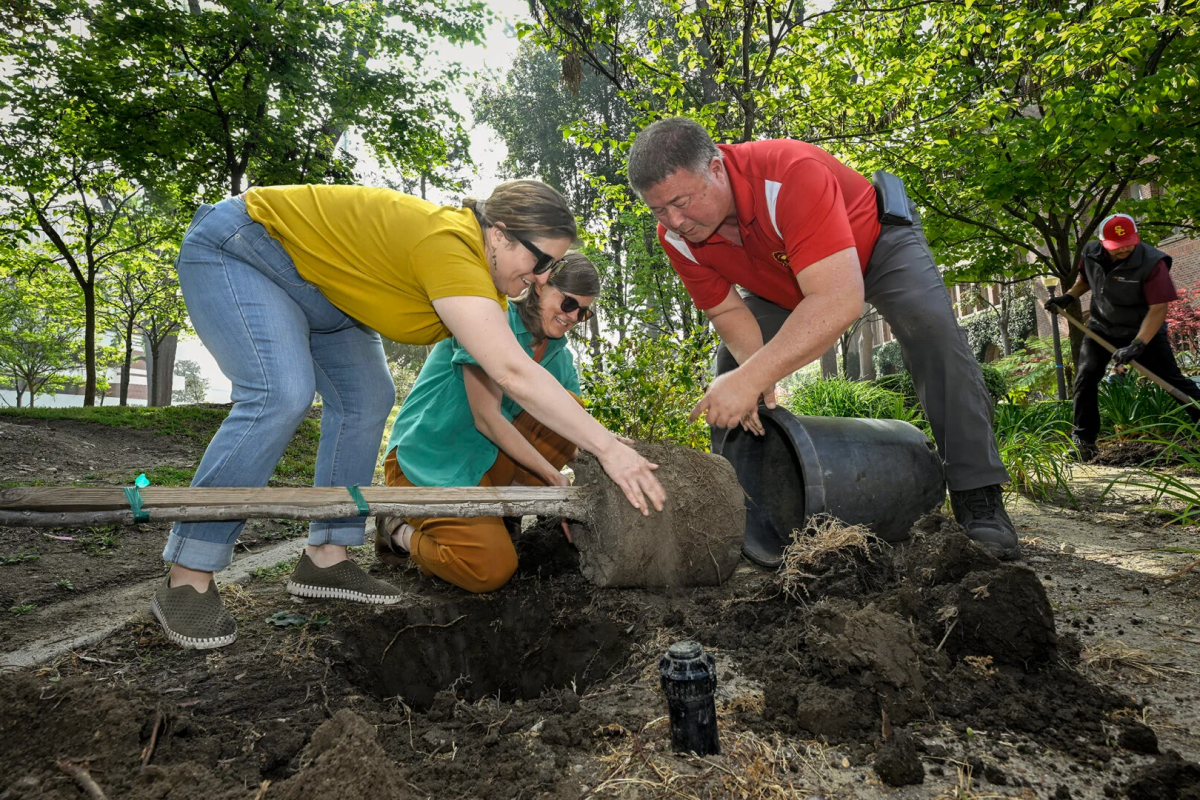Wherever you are at USC, there are reminders of the university’s efforts to ensure it reaches its target of climate neutrality by 2025 and zero waste by 2028.
Whether it’s the hundreds of multi-stream waste diversion bins, newly installed solar panels or drought-tolerant native plants, the impact of USC President Carol Folt’s Sustainability “moonshot” is visible in big and small ways.
Now in its fourth year, Green Week, from Sept. 3-6, celebrates all the university has accomplished in making campuses and operations greener. It also heralds the collaboration between USC students, faculty and staff who are committed to the university’s sustainability mission dubbed “Assignment: Earth.”
New Ginsburg Hall debuts just after USC Green Week
There is much more still to come. Later this month, university leaders and sustainability supporters will cut the ribbon on the new Dr. Allen and Charlotte Ginsburg Human-Centered Computation Hall.
The seven-story structure, home to faculty affiliated with the new USC School of Advanced Computing at the USC Viterbi School of Engineering, will boast a host of sustainability-inspired features including state-of-the-art solar panels, a rainwater capture system and electric vehicle charging stations.
More than 80% of regularly occupied spaces benefit from natural light. Drought-tolerant plants are integrated in the space, and it is anticipated the building will be 37% more energy efficient than a typical dry-lab building. To reduce CO2 emissions, the building was constructed with existing and recycled steel. Recycled concrete aggregate was also used to produce new concrete slabs. Inside, it features sustainably sourced wood certified by the Forest Stewardship Council.
USC also continues to work toward making existing buildings more environmentally friendly. The recently opened USC School of Dramatic Arts building is an example of what can be done to transform the university’s historic structures.
It was renovated with sustainably sourced materials and fitted with an efficient all-electric heating, ventilation and air conditioning system. Energy-saving insulation was added, as was solar reflective roofing and paving materials.
“[The] new Ginsburg Hall and the rehabilitation of the former United University Church creating the USC School of Dramatic Arts building mark significant milestones in progress toward the goals of Assignment: Earth,” said Jon Soffa, university architect and executive director of USC Facilities Planning and Management.
“Both employ a range of building sustainable strategies to reduce energy, water, emissions and waste and support occupant comfort and well-being. Both projects are in final testing and documentation stages in pursuit of the highest levels of Leadership in Energy and Environmental Design (LEED) Certification from the U.S. Green Building Council.”
